- News
- Reviews
- Bikes
- Accessories
- Accessories - misc
- Computer mounts
- Bags
- Bar ends
- Bike bags & cases
- Bottle cages
- Bottles
- Cameras
- Car racks
- Child seats
- Computers
- Glasses
- GPS units
- Helmets
- Lights - front
- Lights - rear
- Lights - sets
- Locks
- Mirrors
- Mudguards
- Racks
- Pumps & CO2 inflators
- Puncture kits
- Reflectives
- Smart watches
- Stands and racks
- Trailers
- Clothing
- Components
- Bar tape & grips
- Bottom brackets
- Brake & gear cables
- Brake & STI levers
- Brake pads & spares
- Brakes
- Cassettes & freewheels
- Chains
- Chainsets & chainrings
- Derailleurs - front
- Derailleurs - rear
- Forks
- Gear levers & shifters
- Groupsets
- Handlebars & extensions
- Headsets
- Hubs
- Inner tubes
- Pedals
- Quick releases & skewers
- Saddles
- Seatposts
- Stems
- Wheels
- Tyres
- Health, fitness and nutrition
- Tools and workshop
- Miscellaneous
- Cross country mountain bikes
- Tubeless valves
- Buyers Guides
- Features
- Forum
- Recommends
- Podcast
review
£3,499.00
VERDICT:
Fun, lively bike with a women-specific build, but certain elements of the frame are starting to look a bit dated
Women-specific finishing kit and contact points
Tyres come already set up tubeless
Compact lever blades
Carbon wheels
Very comfy bar tape
Speed sensor included
Cable routing messy by today's standards
Maximum tyre clearance is only 28mm
Expensive for a 105 build
Weight:
7,880g
Contact:
At road.cc every product is thoroughly tested for as long as it takes to get a proper insight into how well it works. Our reviewers are experienced cyclists that we trust to be objective. While we strive to ensure that opinions expressed are backed up by facts, reviews are by their nature an informed opinion, not a definitive verdict. We don't intentionally try to break anything (except locks) but we do try to look for weak points in any design. The overall score is not just an average of the other scores: it reflects both a product's function and value – with value determined by how a product compares with items of similar spec, quality, and price.
What the road.cc scores meanGood scores are more common than bad, because fortunately good products are more common than bad.
- Exceptional
- Excellent
- Very Good
- Good
- Quite good
- Average
- Not so good
- Poor
- Bad
- Appalling
The Liv Langma Advanced Pro 2 Disc is a very good bike with lots of well-thought-out spec choices that improve the riding experience for women. It's plenty stiff enough for fast outings, though wider clearance would give more scope for extra cushioning.
The Langma range is the Taiwanese brand's lightweight climbing option, filling the gap between the endurance-focused Avail and the all-out aerodynamic machine, the Enviliv. Owned by cycling industry giant, Giant, Liv makes bikes specifically for women.
> Find your nearest dealer here
Within the range, the Langma Advanced Pro benefits from a slightly lighter build than the plain Langma Advanced. Both are available with a range of groupsets; I've been testing the 'entry-level' Langma Advanced Pro 2 Disc which comes with Shimano 105.
Frame
The Langma Advanced Pro frame is made from an Advanced-Grade composite material and has relatively slim tubing, until the aerodynamic down tube thickens out around the PowerCore bottom bracket, which measures 86mm wide. This oversized bottom bracket combined with asymmetric chainstays are designed to provide stiffness where it is needed.
There's a broad consensus that when it comes to frames there isn't much scope for women's specificity. The parameters here are dedicated far more by your riding style and flexibility, rather than your gender.
But that said, there are some general trends which are apparent between the sexes. With its 3F: Design Philosophy, Liv says it better fits a woman's body proportions, and female-specific touch points (with narrower bar and saddle) also help. Women on average tend to have longer legs compared with their torsos than men do – and this is reflected in the reach measurements, which are a bit shorter across the range than you tend to get in an equivalent-sized unisex bike.
Many brands will keep the rear triangle of the frame the same across all sizes of their bikes to keep manufacturing costs down. Making a carbon mould is quite expensive. However, this tends to result in the handling of the bike being compromised at the extreme end of the size range. As sizing tends to be based around what's typical for a man, this means it's disproportionately women who feel the effects of this.
So although the Langma does keep the rear triangle the same throughout all its sizes, it is at least based on the typical woman. So, shorter chainstays are specced, at 405mm, which will help to keep the handling a little better balanced across the sizes, and this also means the smaller sizes are a lot more responsive than those of a unisex bike.
There are a few aspects of this frame that are designed to boost performance, but can make maintenance and cross-compatibility a little bit more of a headache.
The propriety carbon seatpost is designed to increase aerodynamic performance but does mean that replacements and any experimentation with saddle layback is more expensive.
The press-fit bottom bracket in an overbuilt shell is intended to provide a stiffer pedalling platform, but replacing these isn't the easiest job for a home mechanic and requires expensive and specialist tools.
The frame's tyre clearance is 28mm, which until recently would have been thought to be quite generous, but most race bikes these days can handle at least 30mm, with some capable of 35mm. It's not common to see people racing on these widths, but it is nice to have the capacity for training rides.
Groupset
The Advanced Pro 2 comes with an 11-speed Shimano 105 groupset with hydraulic disc brakes. While it might not have the cachet of Ultegra or Dura-Ace, this workhorse groupset of the people is hard to fault in terms of functionality. We really liked it and gave it a 9/10 in our review.
But to drill into the spec choices on this bike, the most obvious optimisation for a women's bike is the use of the ST-R7025 lever blades, instead of the standard ST-R7020 that come specced on most 105 bikes. These levers are designed specifically for those with smaller hands, featuring a reduced reach of 4mm and also bulging outwards a little more at the sides so your fingers don't need to reach round as far to grab a hold.
With the brakes being hydraulic discs, you get a greater ability to modulate the braking power at the levers, providing more fine-tuned control which makes it easier to extract the maximum braking power without overstepping the line and locking up your wheels. The braking power and modulation also remain similar in wet conditions.
A 160mm rotor is specced at the front, which with its larger diameter over a 140mm rotor, provides better heat dissipation so you're less likely to overheat your brakes. It also offers a greater mechanical advantage, increasing the stopping power. Out the back, a 140mm rotor is specced, reflecting the lower braking forces exerted on the rear wheel – and, as a consequence, the lesser need for heat dissipation. Although the smaller rotor does save some weight, the main advantage is that smaller rotors are a little less 'grabby', making it easier not to lock up the rear wheel.
Moving on to the drivetrain, we've got a semi-compact 52/36-tooth chainset paired to an 11-30t cassette, which is a great balance for a wide range of terrain. With a gear of 52x11, there's plenty of top end, so you won't be in any danger of spinning out, while the 36x30 bottom gear will allow a 75kg rider/bike system to climb a 10% gradient at 70rpm and 250w – which is pretty reasonable.
The nice thing about the 11-30t cassette is that the jumps between the gears are identical to the 11-28t cassette for the sprockets from 11t to 21t, making it easy to select a combination that will match your preferred cadence. It's just in the final three sprockets where they differ, going 24-27-30 as opposed to 23-25-28. To be honest, I don't really notice the larger jumps at this lower end of the cassette, so there's not really any sacrifice for gaining a lower bottom gear.
The crank length changes throughout the sizes, with my size medium getting 170mm, which is a little shorter than the 172.5mm cranks that are typically specced on size medium unisex bikes. This might seem a little odd, as the shorter reach was predicated on women having longer legs compared to their torsos, but with the current trend for shorter cranks (because their effect of opening up the hip angle makes it easier to get lower at the front), this length does feel about right.
Wheels and tyres
Giant's SLR 1 42 Carbon Disc wheels are pretty good all-rounders. At 42mm deep, they provide an aerodynamic boost without being as prone to buffeting in crosswinds as deeper section wheels – something lighter riders are more prone to experiencing.
The internal rim width is 19.4mm, which is fairly wide, although nothing avant-garde and should offer more sidewall support over narrower widths – especially when running the tyres at lower pressures. The external rim width is 23mm, which is notably narrow given that there is currently a broad consensus that for optimal aerodynamics the external width of the rim should be 105% that of the tyre, suggesting that for 25mm tyres the rim should be a little over 26mm. But although the differences may be measurable in controlled conditions, you're unlikely to notice this out on the road.
The rims are hookless, which simplifies the manufacturing and makes it easier to build the rim lighter. However, it does mean that you will be limited to certain tyres (listed here), even if you're planning on using inner tubes. Some tyre manufacturers, like Continental, don't recommend fitting any of their tyres, tubeless or not, to hookless rims.
The Gavia Course 1 tyres specced are not only tubeless ready, but actually come already set up with sealant inside. At 25mm, they are on the narrower side, but at least you are able to run lower pressures – in my experience, the carcass tension of a 25mm tubeless tyre tends to be about the same as a 28mm tubed tyre, providing similar comfort levels.
Finishing kit
The handlebar width varies with the bike size, and my size medium comes with a width of 400mm, which is a little narrower than the 420mm handlebars most unisex bikes in this size tend to be specced with. With most women having narrower shoulders than men, this should offer a more natural hand position, as well as being more aerodynamic. With a reach of 72mm and drop of 125mm, it's relatively compact – and especially so in the smaller sizes, with measurements of 68mm and 120mm, which should provide a more comfortable hand position for those with smaller hands.
The bar tape is particularly nice, being very grippy even in the wet and also offering very pleasant cushioning. As a consumable that some brands can try to save some money on, it's nice that this important element to on-the-bike comfort hasn't been compromised here.
The saddle is the in-house Liv Alacra SL, which has quite a modern design, being relatively wide, with a short nose and a central cutout, which many women find a lot more comfortable than traditional style saddles. Personally, I don't get on with a central cutout, but am all for short and wide profiles.
The ride
Although only a relatively small change in design, the ST-R7025 lever blades had a huge impact on my ride. In being slightly closer and with a more bulging profile than the standard ST-R7020s, it felt like I had a lot more control over the braking action both when on the hoods and when in the drops, and with this added confidence I was able to take it a little faster on the descents. My hands aren't particularly small – in unisex gloves I generally take either a medium or a large – but I still felt a huge benefit from these levers.
Shifting into larger sprockets, so switching into a larger gear at the front or easier gears at the back, I found the profile of the lever blades made this a little easier too, which was especially notable on the front, as those tend to be the most difficult shifts.
I did find the short chainstays made the handling a little more twitchy compared with what I'm used to. But then again, as I generally take size medium/54cm unisex frames, I am used to being pretty much slap bang in the middle of the sizing range, whereas with the Liv bikes I am at the top. For the middle and smallest sizes, the handling would likely feel quite balanced, but for the size I was riding – the largest – they did feel a little too short.
The tubeless tyres are respectably fast, perhaps not quite as speedy as a Schwalbe Pro One or Continental GP5000, but they were certainly no drag on my rides and I felt confident in their levels of grip. On some of the more suspect roads, I did find myself wishing for a larger tyre for greater grip and to better protect the rims from hits, but an upgrade to wider rubber is an easy change to make. Paired with Liv's very compact frame design, the narrower 25mm tyres aren't bad in terms of comfort, as a lot more of the seatpost is exposed and this damps road vibrations well.
When it comes to climbing, the Langma is impressively responsive for a bike built with 105. With the overbuilt bottom bracket and compact frame design it feels like your power is being transferred straight to the drivetrain with minimal flex from the frame, and at 7.88kg, it's quick to accelerate as a result. For the rolling hills around Sussex, which are best dispatched with a sharp kick and push over the top, this combination complemented my riding nicely.
The shorter reach combined with the narrower handlebar meant it was more comfortable to ride in the aero-hoods position with my elbows bent at 90 degrees than with other bikes. I could ride the flatter sections faster than on a unisex bike with a more traditional cockpit, as I was able to get, and stay, in a low position.
Value
Although it's a really nice ride, this Langma build is not as good value as some rivals.
The Ribble Endurance SL R, for example, is very light, and for just £200ish more than the Liv you get a fully integrated cockpit, a Shimano Ultegra groupset, slightly deeper wheels, 32mm tyre clearance and hidden mudguard mounts. You can even choose different saddles and handlebars to better suit the female anatomy. (David tested the SRAM Red eTap AXS-equipped version last year.)
> Buyer’s Guide: 12 of the hottest 2021 road bikes
At the same price as this Langma build, the Orbea Orca M20 Team is also specced with Ultegra and a better, integrated cockpit, and you can change the finishing kit too. The tyre clearance is also way bigger at 35mm. But the Orbea does look to be heavier, and the wheels are a lower spec with alloy rims and a shallower depth.
One thing to consider is that both these Ribble and Orbea options keep the chainstay length the same throughout the size range, so if you're at the smaller end you would likely end up with a more balanced feeling bike with the Liv Langma Advanced Pro.
Conclusion
Overall, the Liv Langma Advanced Pro 2 Disc is a very good bike with lots of well-thought-out spec choices that improve the riding experience for women, including compact shifters, a female-specific saddle and shorter chainstays for a nimble ride feel.
The oversized bottom bracket provides a stiff enough pedalling platform and there isn't a detectable amount of flex from the wheels either – these are not something you'll need to upgrade in a rush.
A little more tyre clearance wouldn't go amiss, though. The tubeless setup goes some way to smoothing the ride, but with clearances capped at 28mm, there's not a significant amount of scope for additional cushion.
Verdict
Fun, lively bike with a women-specific build, but certain elements of the frame are starting to look a bit dated
road.cc test report
Make and model: Liv Langma Advanced Pro 2 Disc 2021
Size tested: Med, 54cm
About the bike
List the components used to build up the bike.
Frame: Advanced-Grade Composite, disc
Fork: Advanced-Grade Composite, full-composite OverDrive 2 steerer, disc
Handlebar: Giant Contact SL
Stem: Giant Contact SL
Seatpost: Giant Variant, composite
Saddle: Liv Alacra SL
Shifters: Shimano 105
Front Derailleur: Shimano 105
Rear Derailleur:Shimano 105
Brakes: Shimano 105 hydraulic disc
Brake Levers: Shimano 105 hydraulic
Cassette: Shimano 105, 11x30
Chain: KMC X11SL-1
Crankset: Shimano 105, 36/52
Bottom Bracket: Shimano, press fit
Rims: Giant SLR 1 42 Disc WheelSystem
Hubs: Giant SLR 1 42 Disc WheelSystem
Spokes: Giant SLR 1 42 Disc WheelSystem
Tyres: Giant Gavia Course 1, 700x25c (max tyre width possible: 28mm)
Extras: RideSense Bluetooth, tubeless prepared
Tell us what the bike is for and who it's aimed at. What do the manufacturers say about it? How does that compare to your own feelings about the bike?
Liv says: "With Liv's 3F Design Philosophy and cutting-edge lightweight aerodynamic innovations, Langma Advanced Pro Disc provides the winning advantage for every effort, from long hilly races to fast-paced criteriums. The unrivaled stopping power of disc brakes provides the confidence to carry speed in fast corners or tight quarters. The frame's slender tubing creates an extremely fast and lightweight racing machine, while the downtube thickens as it approaches the PowerCore bottom bracket for pedalling stiffness and strength."
Where does this model sit in the range? Tell us briefly about the cheaper options and the more expensive options
The Langma Advanced Pro 2 Disc is the cheapest in the Langma Advanced Pro range at £3,499 with a Shimano 105 groupset and no power meter.
The Pro 1 has an Ultegra mechanical groupset with Giant's Pro power meter and the Pro 0 has an Ultegra Di2 groupset with the same power meter.
Frame and fork
Overall rating for frame and fork
7/10
Tell us about the build quality and finish of the frame and fork?
The paint quality is very good, as is the build quality.
Tell us about the materials used in the frame and fork?
Advanced-Grade composite material.
Tell us about the geometry of the frame and fork?
It's race geometry, with a slightly shorter reach and much shorter chainstays than men's/unisex bikes, designed to suit female body proportions.
How was the bike in terms of height and reach? How did it compare to other bikes of the same stated size?
The reach is quite short, but the stack is broadly the same as other bikes in this class and size.
Riding the bike
Was the bike comfortable to ride? Tell us how you felt about the ride quality.
It was very comfortable to ride. There's lots of seatpost exposed which really helps damp the road vibrations and the bar tape provides plenty of cushioning. The tubeless tyres allow for lower pressures and provide a reciprocal increase in comfort.
Did the bike feel stiff in the right places? Did any part of the bike feel too stiff or too flexible?
The oversized bottom bracket provided a plentifully stiff pedalling platform and there wasn't a detectable amount of flex from the wheels either.
How did the bike transfer power? Did it feel efficient?
Felt great and powerful.
Was there any toe-clip overlap with the front wheel? If so was it a problem?
Only just with EU size 43 feet in the size medium, but not to the extent that it was a problem.
How would you describe the steering? Was it lively neutral or unresponsive? Lively.
Tell us some more about the handling. How did the bike feel overall? Did it do particular things well or badly?
Short chainstays resulted in rather twitchy handling.
Which components had the most effect (good or bad) on the bike's comfort? would you recommend any changes?
The compact frame design meant a lot of the seatpost was on show, this really helped take the edge off the road buzz. The tubeless setup went some way to smoothing the ride, but with clearances capped at 28mm, there's not a significant amount of scope for additional cushion.
Which components had the most effect (good or bad) on the bike's stiffness? would you recommend any changes?
The wheels, handlebar and cranks were all plentifully stiff, there isn't much need for improvement.
Rate the bike for efficiency of power transfer:
9/10
Rate the bike for acceleration:
8/10
Rate the bike for sprinting:
8/10
Rate the bike for high speed stability:
6/10
Rate the bike for cruising speed stability:
7/10
Rate the bike for low speed stability:
7/10
Rate the bike for flat cornering:
8/10
Rate the bike for cornering on descents:
6/10
Rate the bike for climbing:
8/10
The drivetrain
Rate the drivetrain for performance:
8/10
Rate the drivetrain for durability:
9/10
Rate the drivetrain for weight:
7/10
Rate the drivetrain for value:
5/10
Tell us some more about the drivetrain. Anything you particularly did or didn't like? Any components which didn't work well together?
The semi compact crankset and 11-30t cassette provided a great range at both the high and low ends – as well as keeping the jumps between the gears at reasonable sizes.
Wheels and tyres
Rate the wheels for performance:
8/10
Rate the wheels for durability:
9/10
Rate the wheels for weight:
7/10
Rate the wheels for comfort:
7/10
Rate the wheels for value:
6/10
Rate the tyres for performance:
7/10
Rate the tyres for durability:
6/10
Rate the tyres for weight:
8/10
Rate the tyres for comfort:
8/10
Rate the tyres for value:
6/10
Controls
Rate the controls for performance:
9/10
Rate the controls for durability:
8/10
Rate the controls for weight:
7/10
Rate the controls for comfort:
9/10
Rate the controls for value:
6/10
Your summary
Did you enjoy riding the bike? Yes
Would you consider buying the bike? Yes, although the chainstays are a bit short for the medium size.
Would you recommend the bike to a friend? Yes, to smaller riders in particular.
How does the price compare to that of similar bikes in the market, including ones recently tested on road.cc?
Ribble's Endurance SL R Disc Ultegra with Level 40 wheels has a better spec for £3,699, and so does the Orbea Orca M20 Team at £3,499.
Rate the bike overall for performance:
8/10
Rate the bike overall for value:
5/10
Use this box to explain your overall score
Overall, the Liv Langma Advanced Pro 2 Disc is very good; it's fun and lively to ride, as well as comfortable thanks to the well-thought-out spec choices for women.
About the tester
Age: 23
I usually ride: Road bike My best bike is:
I've been riding for: 10-20 years I ride: Every day I would class myself as: Expert
I regularly do the following types of riding: road racing, cyclo cross, commuting, touring, club rides, sportives, general fitness riding, Gravel riding, indoor turbo and rollers, track
Anna has been hooked on bikes ever since her youthful beginnings at Hillingdon Cycle Circuit. As an avid road and track racer, she reached the heady heights of a ProCyclingStats profile before leaving for university. Having now completed an MA in Multimedia Journalism, she’s hoping to add some (more successful) results. Although her greatest wish is for the broader acceptance of wearing funky cycling socks over the top of leg warmers.
Latest Comments
- Bungle_52 24 min 27 sec ago
Thanks for that. After a bit of research I now think that the difference is that it's parking on a zig zag rather than a cycle lane that is the...
- David9694 38 min 32 sec ago
Woman jailed for driving despite incredible number of penalty points and road ban...
- chrisonabike 36 min 44 sec ago
The people won't change if you don't change things to accommodate them, but if you change things to accommodate them they may complain you're...
- Neil MG 52 min 4 sec ago
Isn't the irony in Coren's shameless, spiteful little piece, that these attacks and armed robberies on defenceless or easy targets, will actualy...
- Marcus_Ironman_Richardson 1 hour 4 min ago
Re: Keeping your white shoes white...have you tried, Muck off bike cleaner?...
- chrisonabike 2 hours 19 min ago
Is that one of those new pronouns?
- chrisonabike 3 hours 1 min ago
Never bring a chihuahua to a dachshund fight?
- Grumpy Bob 4 hours 1 min ago
I was burnt before by buying into Speedplay X pedals - lovely pedals, but when Speedplay were bought by Wahoo they were discontinued and the cleats...
- David9694 11 hours 54 min ago
Young driver reported after flipping car in Wiltshire high street...
- Bigtwin 12 hours 4 min ago
Councils. Utter ficktards the nation over.






































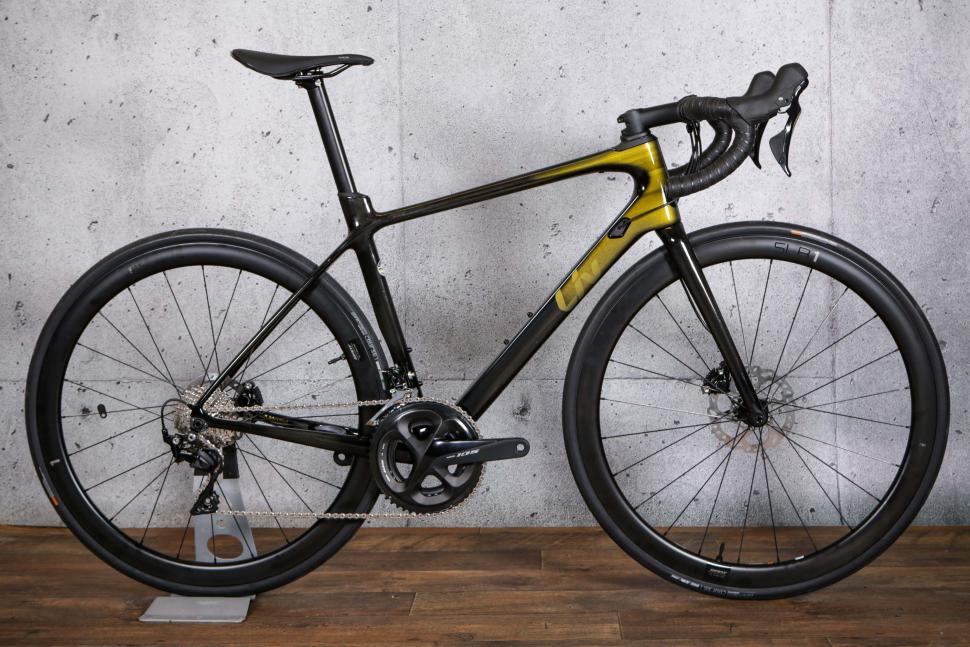
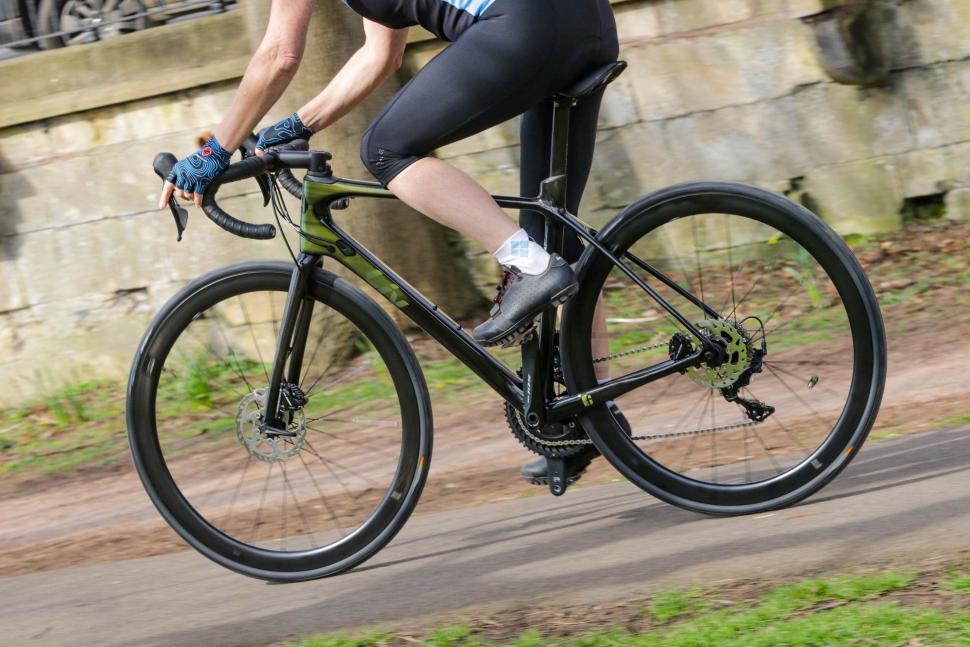

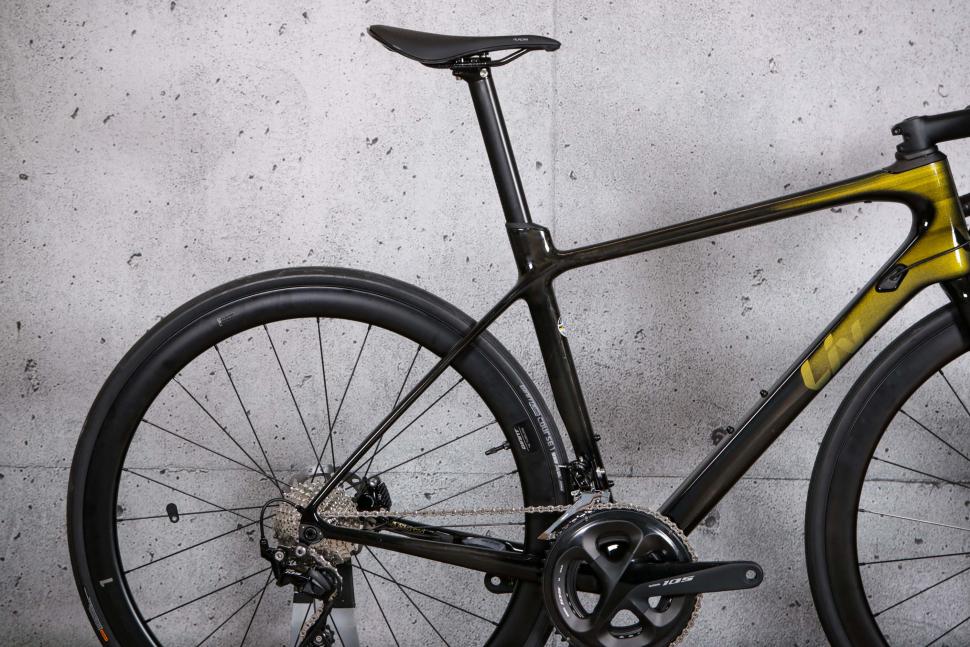
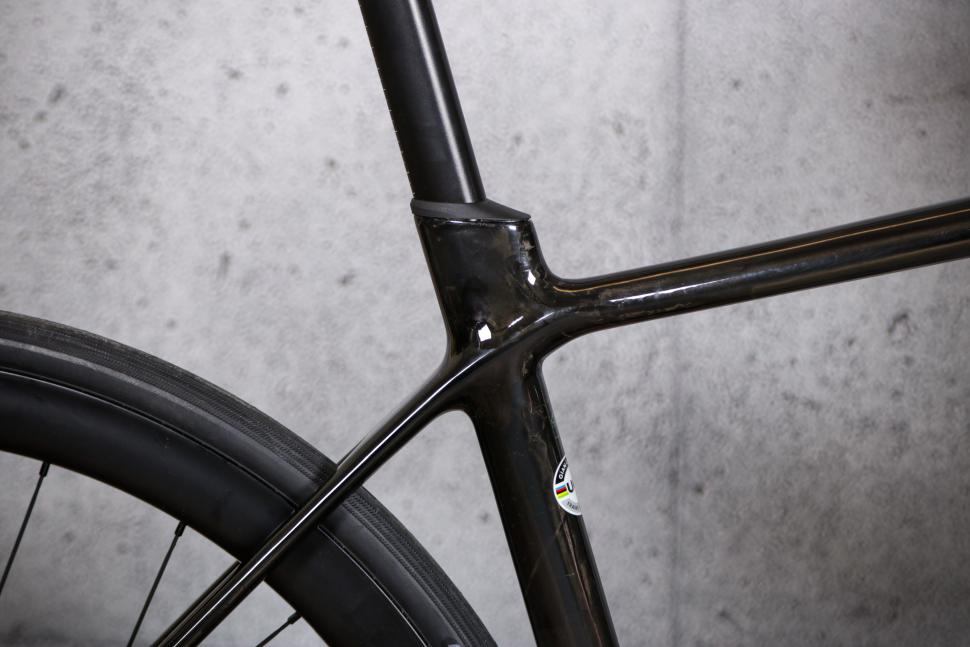
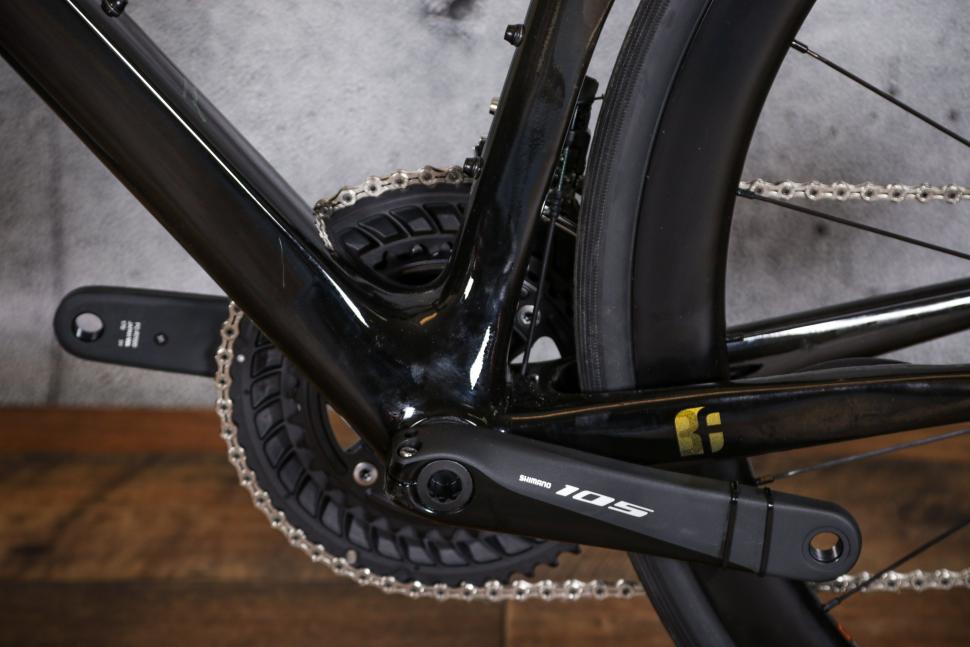
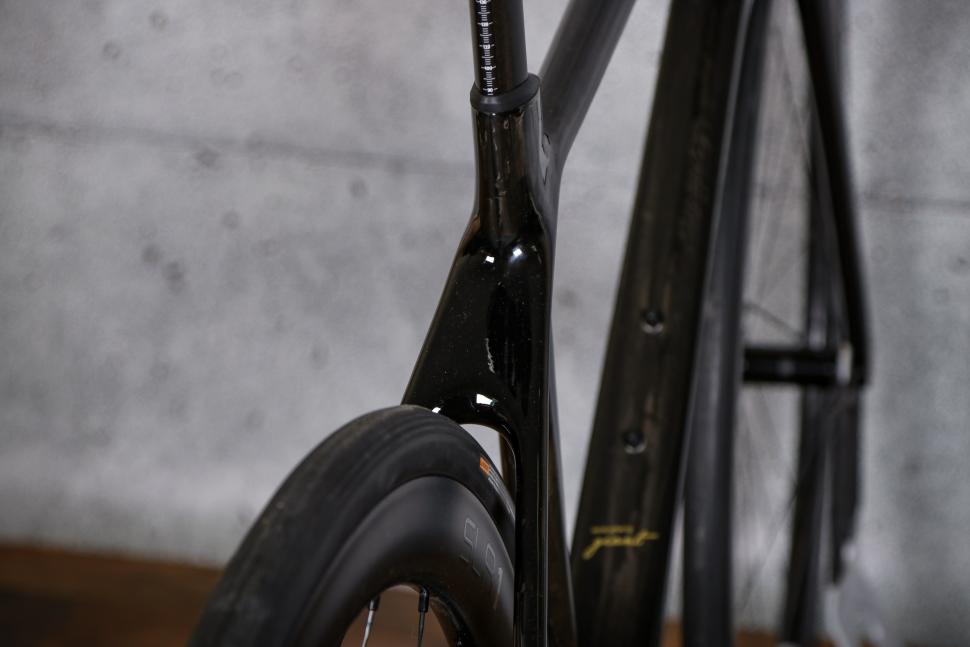

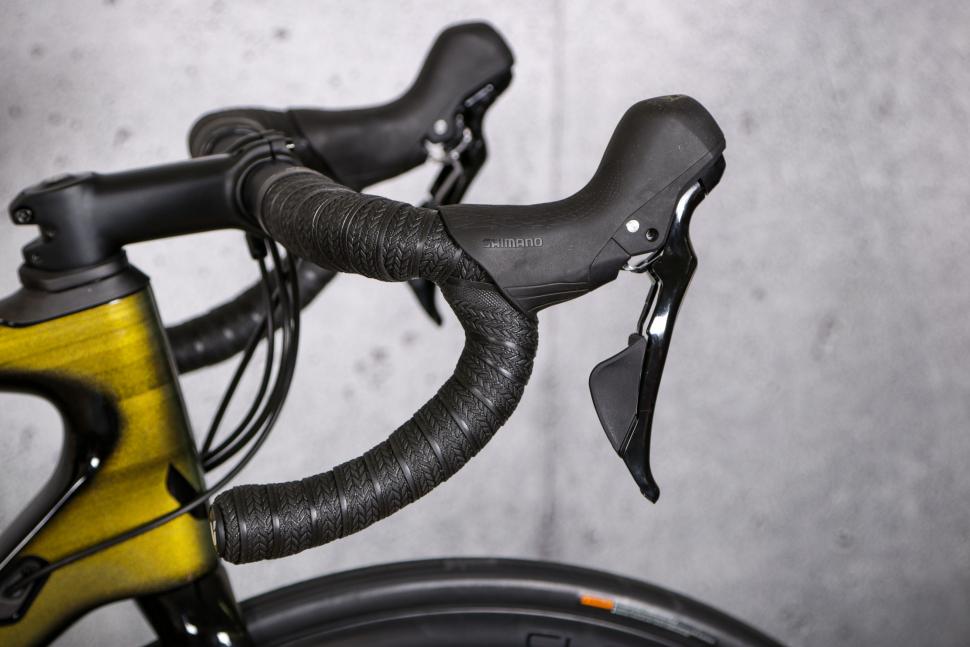
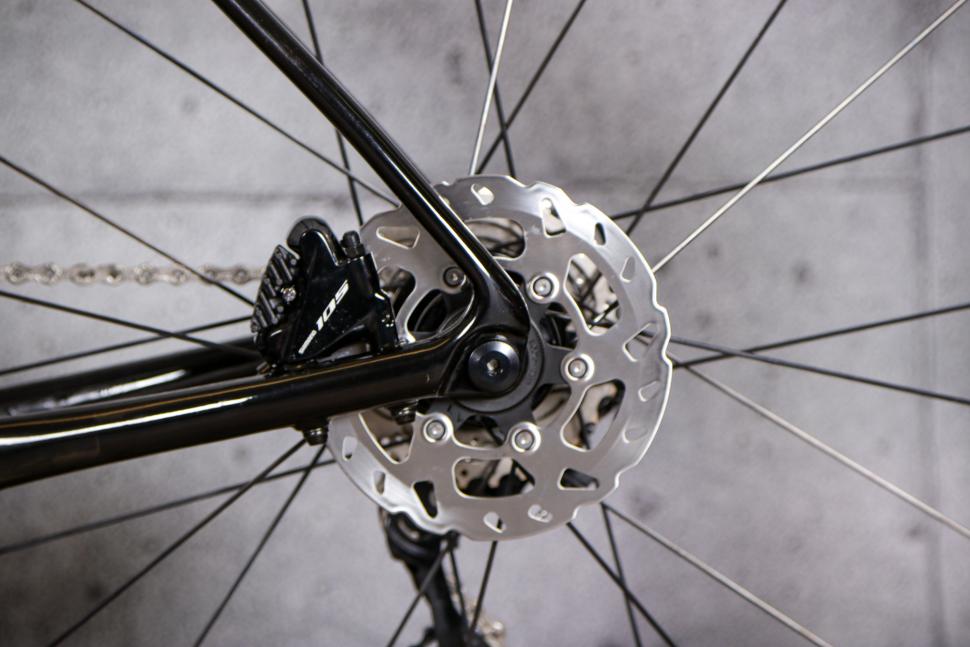

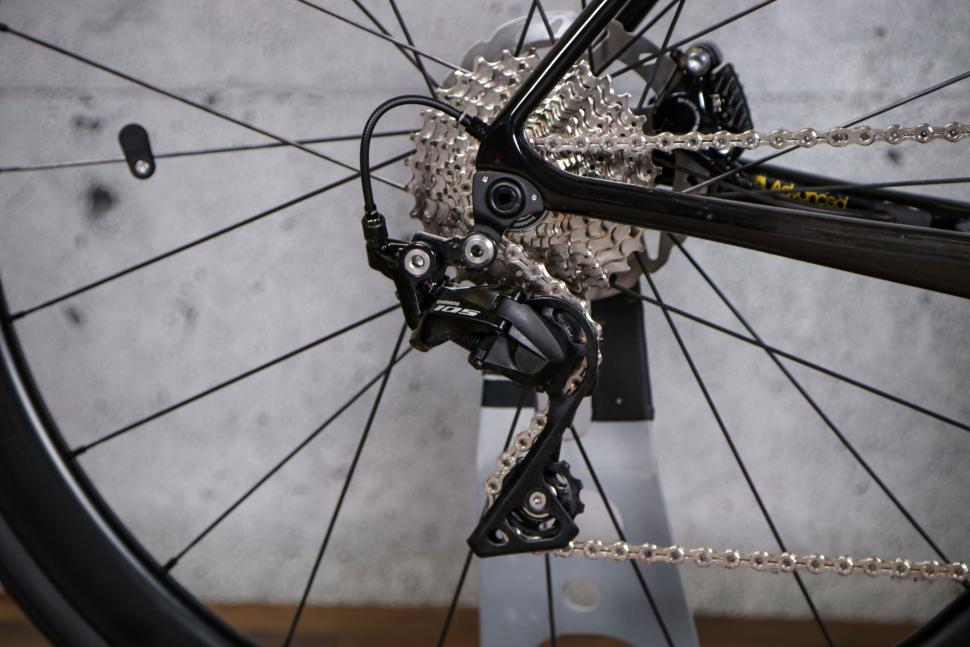

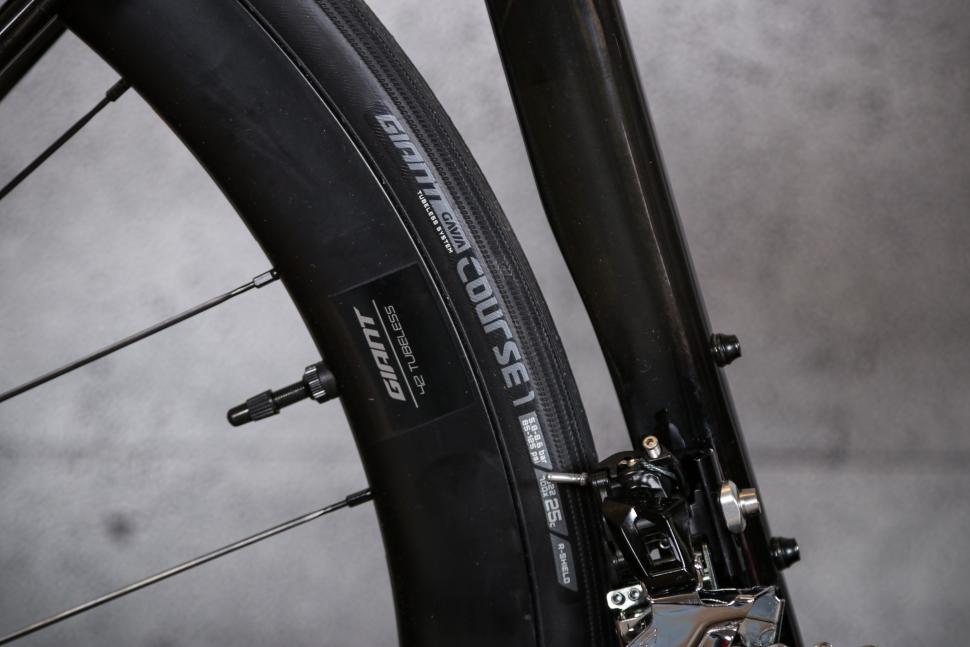
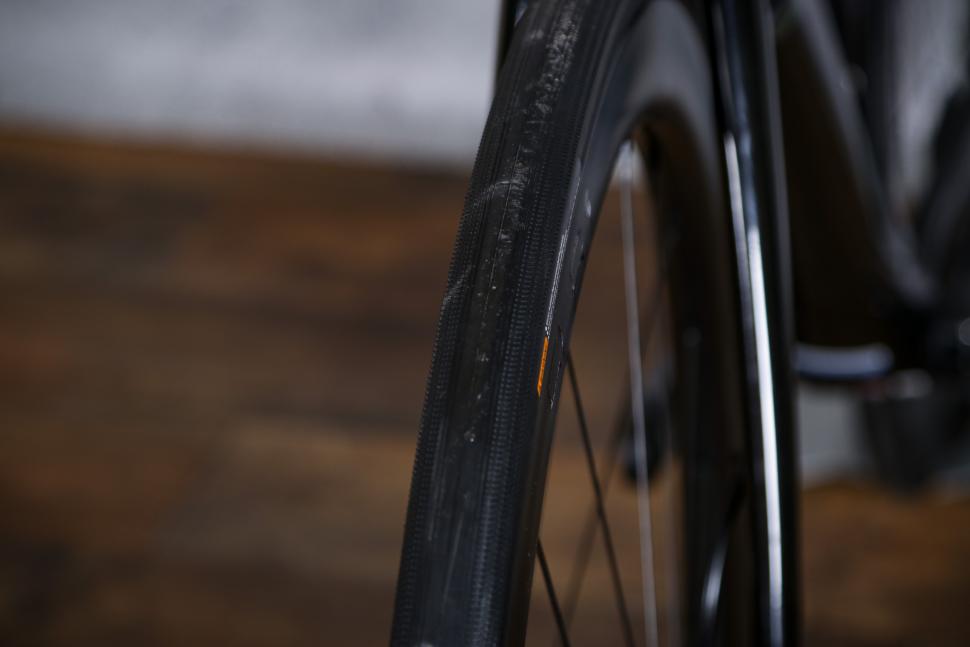
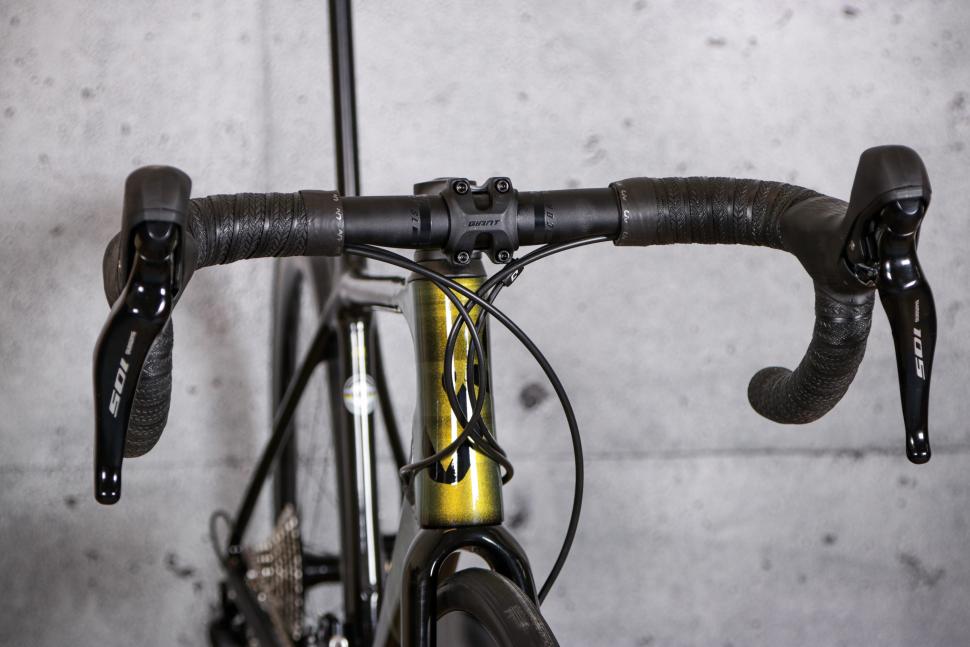
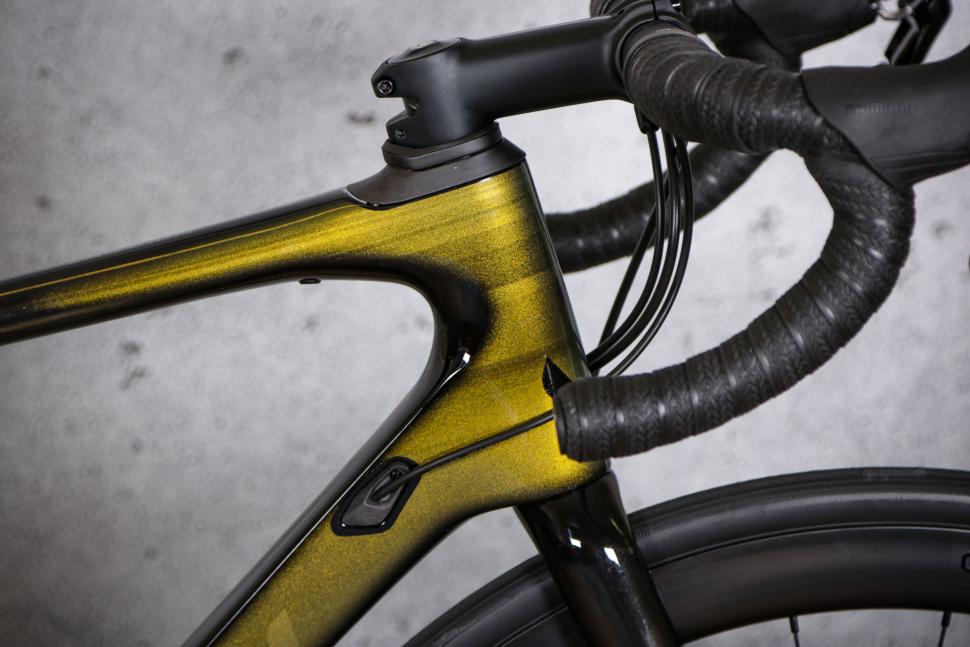

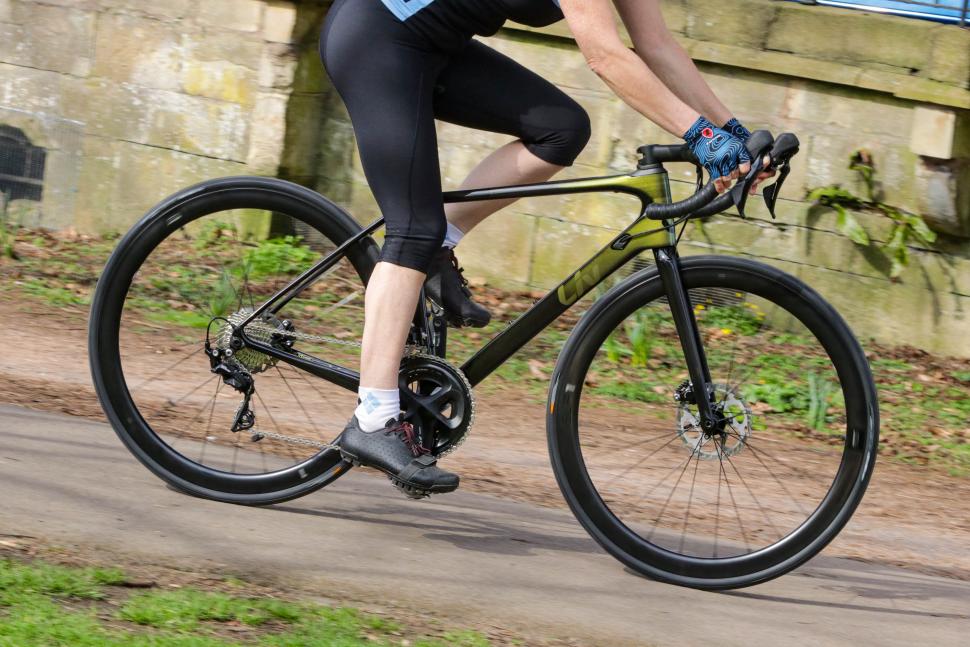
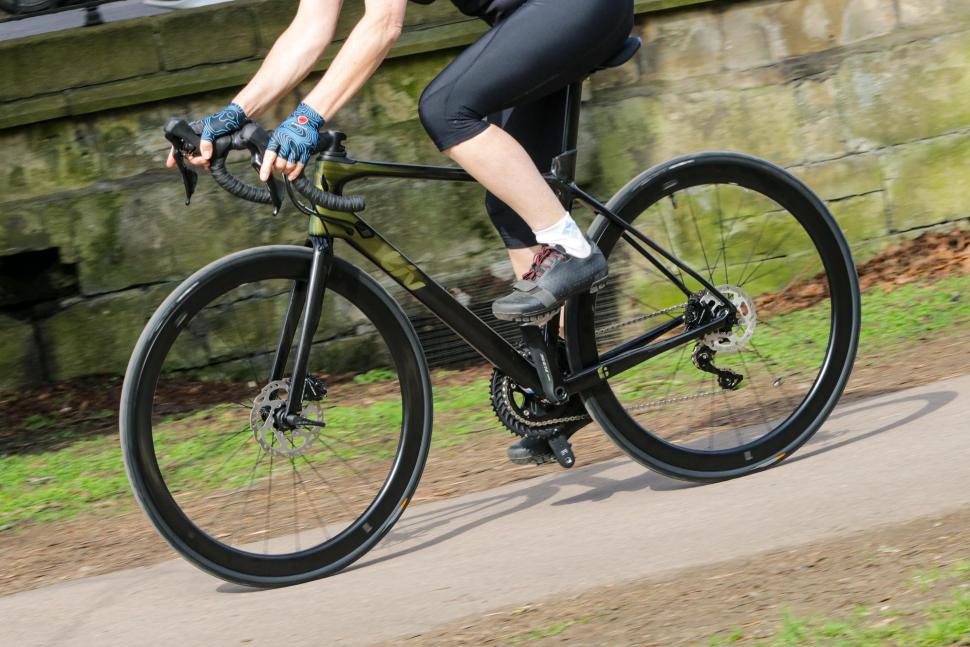




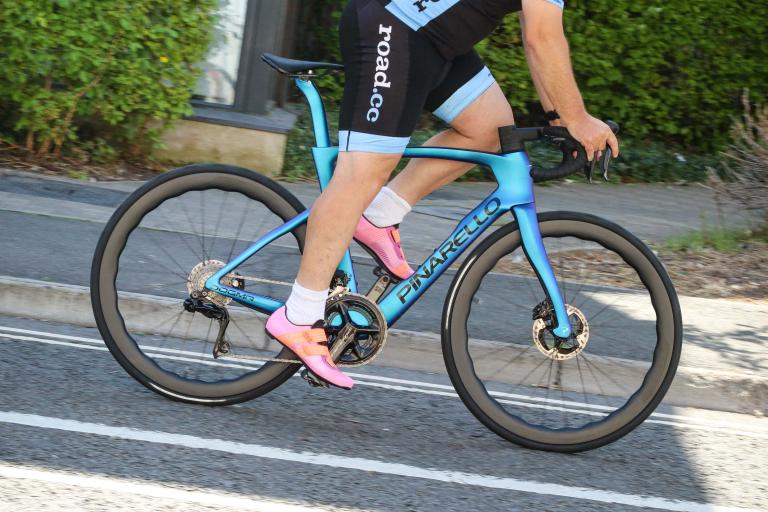
Add new comment
1 comments
Previous versions of this bike at that price had Ultegra (and the power meter). But the general increase in bike prices has bumped the 105 version to this price point, and the Ultegra to just over the £4k mark.